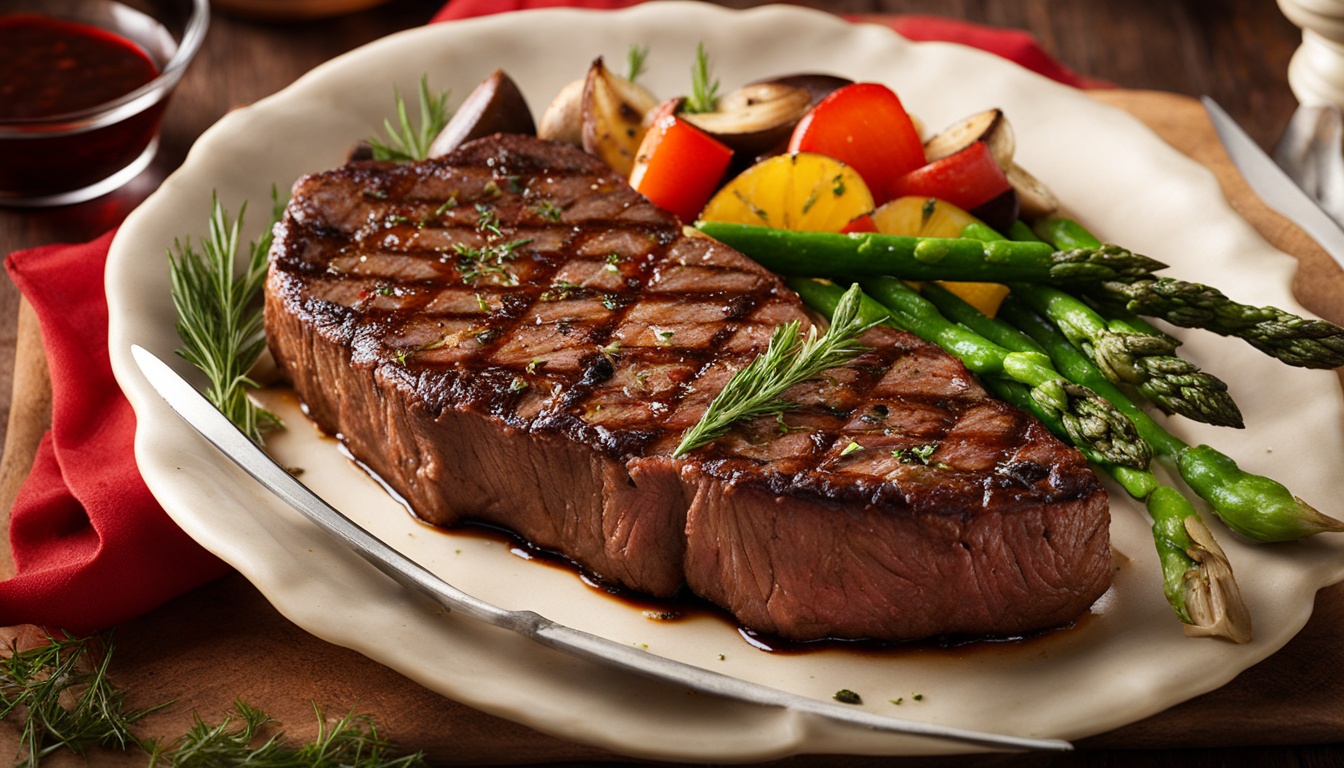Are you tired of spending time and effort trying to achieve the perfect steak? Wondering if there’s a secret technique that chefs use to cook steak to perfection? Look no further, because we’re about to reveal the best way to cook steak that will elevate your grilling game to new heights.
Whether you’re a seasoned grill master or a novice in the kitchen, these cooking steak techniques will ensure that every steak you prepare is a masterpiece. From selecting the right meat to achieving the perfect doneness, we’ve got you covered.
So, what is the secret to cooking the perfect steak? Is it all about the marinade? Or maybe the seasoning? The truth is, the key lies in a combination of factors that work together to create steak perfection.
In this article, we’ll take you through the step-by-step process of cooking steak like a pro, from defrosting to seasoning, and everything in between. We’ll also explore the pros and cons of grill vs. pan searing steak, so you can choose the best method for your cooking style. Plus, we’ll delve into the different levels of steak doneness, helping you achieve your desired level of juiciness and tenderness.
Ready to unlock the secrets to the perfect steak? Let’s dive in!
Grill vs. Pan Searing Steak: Pros and Cons
When it comes to cooking steak, there are various methods to choose from. Two popular options are grilling and pan searing. Each method offers its own advantages and considerations, contributing to different culinary experiences and flavors.
Grilling Steak
Grilling steak involves cooking the meat over an open flame, whether on a gas or charcoal grill. This method imparts a unique smoky flavor and creates a delightful charred crust on the steak. It’s a favorite technique for many steak enthusiasts.
When grilling, thinner steaks benefit from high heat and direct grilling, while thicker cuts often require indirect grilling to ensure thorough cooking without charring the exterior.
Pros of grilling steak:
- Smoky flavor: Grilling over an open flame adds a distinct smokiness, enhancing the overall taste of the steak.
- Charred crust: The direct heat creates a mouthwatering crust on the outside of the steak, which adds texture and flavor.
- Visually appealing grill marks: Grilling produces attractive grill marks on the steak, giving it an appealing presentation.
Cons of grilling steak:
- Difficult temperature control: Grilling requires skill to control the temperature effectively. Improper temperature control can lead to overcooking, resulting in a less flavorful and tender steak.
- Potential flare-ups: The flares caused by fat dripping onto the open flame can char the steak, leading to uneven cooking.
While grilling creates a unique and delicious flavor profile, it may require more attention and expertise to achieve the desired results.
When deciding between grilling and pan searing, consider the flavors and textures you prefer, and the level of control you desire over the cooking process. Both methods can yield delicious steaks, so choose the one that best suits your preferences and cooking abilities.
Achieving the Perfect Steak Doneness Levels
When it comes to cooking steak, achieving the perfect doneness is essential for a mouthwatering experience. Different steak doneness levels offer varying degrees of juiciness and tenderness, allowing you to customize your steak to your desired taste. Let’s explore the various steak doneness levels and the corresponding internal temperatures:
1. Rare steak (125-130°F): Cook the steak until it reaches an internal temperature of around 125-130°F for a juicy and tender steak with a cool, red center.
2. Medium-rare steak (135-145°F): Cook the steak until it reaches an internal temperature of around 135-145°F for a slightly pink center and a good balance of juiciness and tenderness.
3. Medium steak (145-155°F): Cook the steak until it reaches an internal temperature of around 145-155°F for a pink center and slightly less juiciness.
4. Medium-well steak (155-165°F): Cook the steak until it reaches an internal temperature of around 155-165°F for a slightly pink center and less juiciness.
5. Well-done steak (165°F and above): Cook the steak until it reaches an internal temperature of 165°F and above for a fully cooked steak with no pinkness but may result in a drier texture.
Remember, using a meat thermometer is the most accurate way to ensure your steak is cooked to the desired doneness. Keep in mind that carryover cooking will cause the internal temperature to rise a few degrees while the steak rests, so it’s best to remove the steak from the heat source a few degrees before reaching the target temperature. By cooking your steak to the perfect doneness level, you can savor every bite with steak-cooked perfection.
